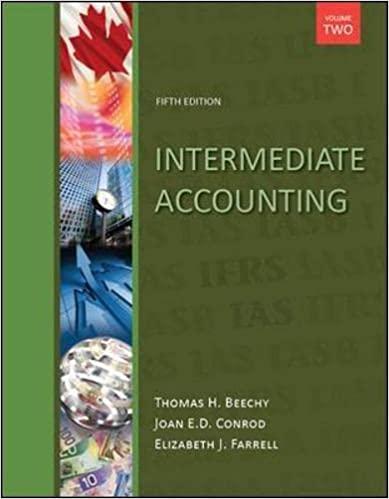For organizations with defined benefit pension plans, the actuary's estimate of the organization's obligation for pension benefits
Question:
For organizations with defined benefit pension plans, the actuary's estimate of the organization's obligation for pension benefits must be disclosed. The market value of pension plan assets available to satisfy that obligation is also disclosed in the notes to the financial statements. Within accounting circles, there has been considerable debate as to whether it would be more appropriate to recognize the net status of the plan (pension assets less pension liabilities) of the plan as an asset or obligation on the face of the SFP instead of relying on disclosure. Consider, for example, the following conversation, between the chief financial officer (CFO) of a large corporation and a financial analyst (FA) from a brokerage firm:
FA: "I'm sick and tired of having to adjust liabilities on the statement of financial position for footnote liabilities, such as the net pension obligation! The projected benefit obligation is that of the organization, not the pension fund, and it belongs, net of related plan assets, on the organization's statement of financial position."
CFO: "I was under the impression that it was the extent of disclosure, not the form, that mattered to you analysts."
\(F A\) : "That's not the point. A statement of financial position must be complete to be useful. It seems to me that the defined benefit obligation meets any reasonable definition of a liability, and it belongs with other liabilities. Besides, some users might be misled because they expect the SFP to contain all liabilities."
CFO: "I have some concerns about putting the pension obligation on the statement of financial position. For one thing, the pension fund is a separate legal entity. Take my organization for example. We have agreed with our union to work toward a goal of having the plan, which is currently underfunded, fully funded by 20X20. Our only obligation is to make contributions to the pension fund as suggested by the actuary in order to achieve our funding objective.
"Also, the benefit obligation is based on the projected salaries of our employees. If we used current salaries, with an actuarial method such as the accumulated benefit method, our defined benefit obligation would reflect our current obligations and be much lower. This is what we'd have to pay if we terminated the plan at any point, and it makes more sense as a SFP position.
"I further have concerns that the obligation is too soft a number to warrant recognition along with other liabilities. For example, consider our plan formula, which provides for an annual post-employment pension benefit of \(2 \%\) of the employee's career average earnings for each year of service, to be paid each year beyond retirement until death. All payments are fully indexed to cost-of-living increases after retirement. There are many uncertainties related to measurement.
"And one more thing. How is our auditor supposed to be able to express an opinion as to whether the obligation is fairly presented? That means a lot of hours spent with the actuary, hours that our organization will have to pay for! Things are much simpler for the auditor when the obligation appears in a disclosure note only."
FA: "The need to make estimates about the future is not unique to pensions. I wonder whether the claim about uncertainties related to measurement is just an excuse you use to conceal your real concerns."
CFO: "Well, to be honest, our organization does have concerns about the economic consequences resulting from putting the net pension liability on the statement of financial position. Our stock price could be adversely affected, not to mention our credit rating, borrowing capacity, and management compensation contracts."
FA: "It seems that the controversy regarding pension accounting continues!"
Required:
Discuss the issues raised.
Step by Step Answer:






